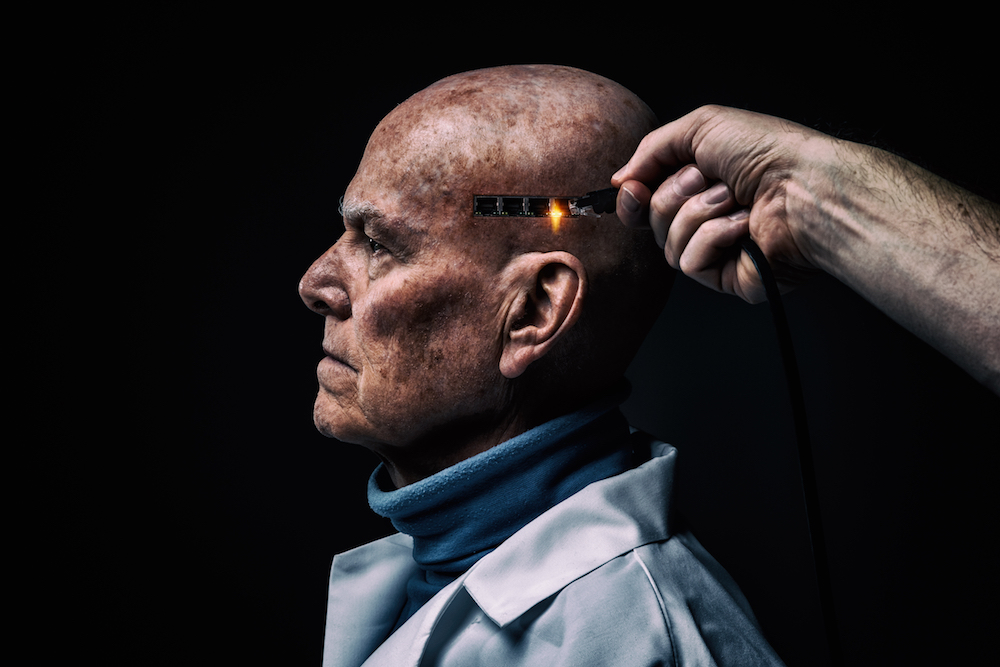You Should Be Very Skeptical of Nectome's Deadly 'Mind-Uploading Service'

Four things are true: One, a startup called Nectome plans to embalm the living brains of dying people, with the promise that the preserved tissues might someday be brought back to life. Two, the grim plan has gotten a ton of press coverage in the past few days, ever since MIT Technology Review covered it on Tuesday (March 13). Three, most of that press coverage doesn't cite any outside neuroscience experts. And four, all of the experts that Live Science contacted to discuss the story have expressed, one way or another, that they found the plan ridiculous.
Nectome plans to insert itself into the process of physician-assisted suicide. The company wants to flood the arteries of living people who have terminal illnesses with embalming fluid to preserve their brain tissue. The idea is that the dead organ would then be converted into a map of all the connections among neurons — constituting a complete, physical "connectome," from which a person's consciousness might one day be resurrected. The evidence that they can pull it off? They've managed to successfully preserve a pig's brain "so well that every synapse inside it could be seen with an electron microscope."
The company also says, somewhat ghoulishly, that the process is "100 percent fatal." [Top 10 Weird Ways We Deal With the Dead]
Here are some of the first responses Live Science got from three neuroscientists and their graduate students after contacting them in the last 48 hours to seek their opinions of the company:
"Oh, lord."
"Don't you think it's not even worth reporting? You're just giving them more publicity."
"Oof, OK."
Get the world’s most fascinating discoveries delivered straight to your inbox.
The last quote came from Jens Foell, a neuroscientist at Florida State University who specializes in using neuroimaging (MRIs, mostly) to study the relationship between the brain's doings and a person's behavior, perception and personality traits.
It's "cool" that Nectome managed to preserve the pig brain, Foell told Live Science, but what the company preserved is "not the whole story" of what that brain was or the information it processed and contained.
"It's true that synapses are where all the action happens," he said. "But cell firing behavior is determined by other things, including processes within the cells that are determined by proteins that are much smaller than synapses (and some of them are short-lived)."
The connectome
Connectome research is a real and interesting scientific pursuit. But, as Scientific American reported in 2012, it's genuinely unclear how much information the connectome can provide even about creatures like the worm Caenorhabditis elegans, which has had its entire connectome mapped. Many neuroscientists believe, Scientific American wrote, that even a complete connectome offers barely enough data to "scratch the surface" of C. elegans' behavior.
Sam Gershman, a computational neuroscientist at Harvard University, spelled out for Live Science the problems he sees with Nectome's claims about the connectome.
"The connectome is without a doubt necessary for memory, in the sense that if you removed all the connections, you wouldn't remember anything," he wrote in an email. He added that "Most memories don't depend on single neurons (this would be catastrophic, since cells die all the time)."
But just because the connectome is a part of how your memory works, that doesn't prove that future scientists could somehow reconstruct your memory from it, he said. [What Happens When You Die?]
"The important question," Gershman wrote, "is whether the connectome is sufficient for memory: Can I reconstruct all memories knowing only the connections between neurons? The answer is almost certainly no, given our knowledge about how memories are stored (itself a controversial topic)."
Gershman said that it's "questionable" whether scientists have learned anything meaningful about personality and behavior from connectome mapping.
"The critical thought experiment is to ask whether you could write a computer program that recapitulates these cognitive phenomena using the connectome," he said.
In other words, does any kind of working model exist that would show how a brain that encoded key information purely in its connectome would work?
"There has been very little work of this kind," Gershman said, "because the connectome is a fundamentally impoverished source of information about brain function."
Like Foell, Gershman said that there is a lot of key information that's simply missing from the kind of connectome map Nectome aims to preserve.
"You need to know the synaptic strengths, if they're excitatory/inhibitory, various time constants, what neuromodulators are present, the dynamical state of dendritic spines. And that's all assuming that memories are even stored at synapses!" he said.
Neuroscientists still just don't know what a memory looks like in the brain, which makes any company claiming to be able to preserve memories worth questioning.
Live Science asked Gershman whether he would encourage people to spend money on a service like Nectome's.
"No," he said. "A person's complete memory cannot be reconstructed from a set of electron micrographs."
Originally published on Live Science.

